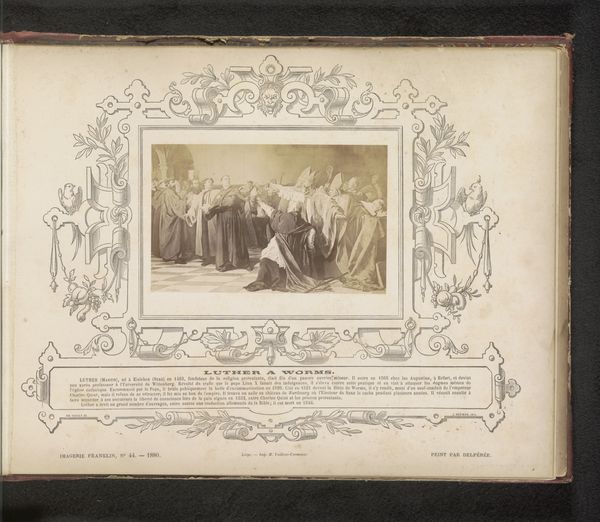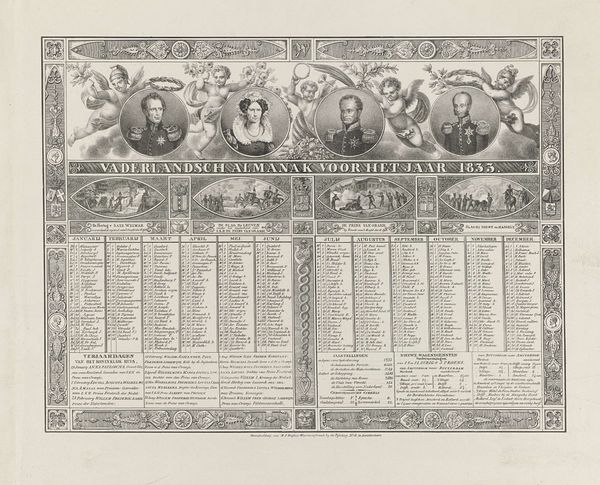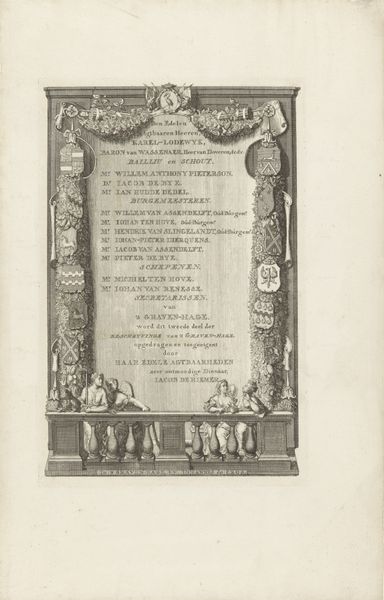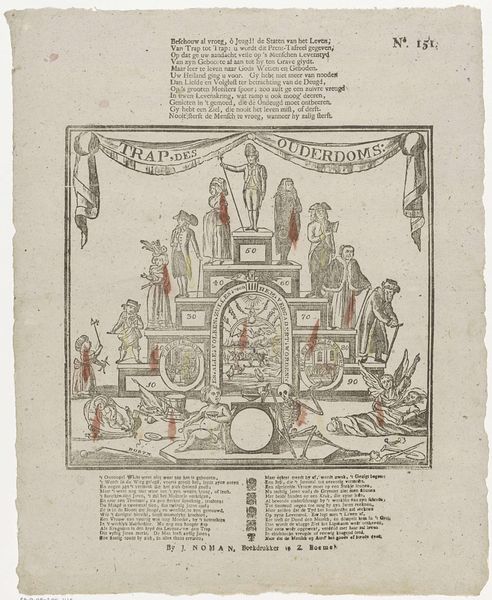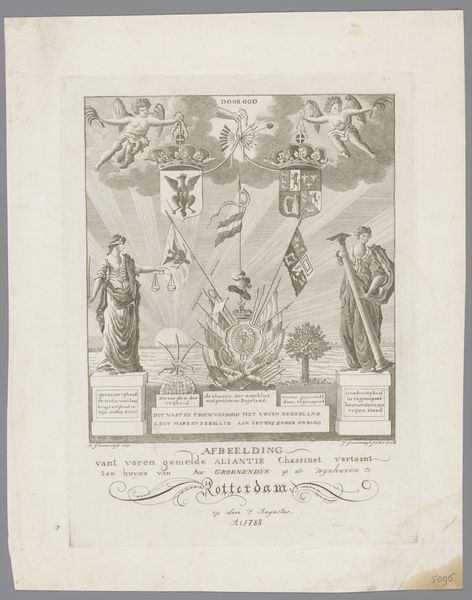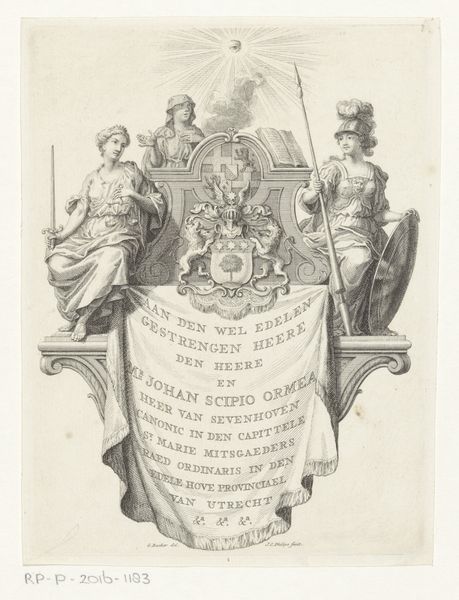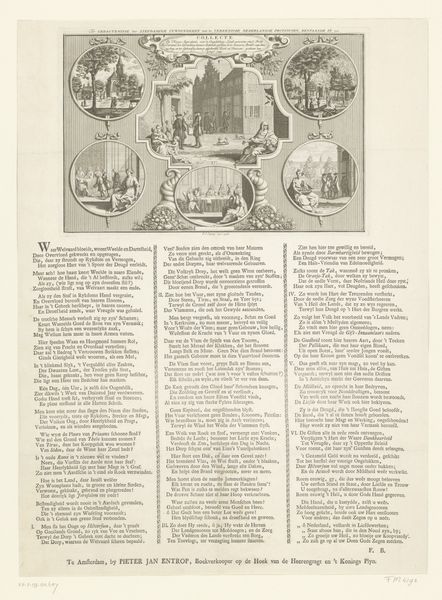
Gedenkplaat bij het 3e eeuwfeest van de Leidse Hogeschool, 1575-1875 1875
0:00
0:00
print, etching, paper, engraving
#
portrait
# print
#
etching
#
paper
#
history-painting
#
academic-art
#
engraving
Dimensions: height 565 mm, width 735 mm
Copyright: Rijks Museum: Open Domain
Curator: The work before us, created by Pieter van Looy in 1875, is a commemorative print honoring the tercentenary of Leiden University. It’s an etching and engraving on paper currently held at the Rijksmuseum. Editor: My first impression? The rigid symmetry and subdued palette create a solemn, almost academic, atmosphere. It’s visually quite dense with details and text. Curator: Indeed. It’s interesting how this print serves as a historical marker, an attempt to encapsulate three centuries of institutional legacy. The visual language is strongly rooted in academic tradition, evoking the values of learning and national pride. It's a carefully constructed narrative about Dutch intellectual identity. Editor: I'm drawn to the allegorical figures flanking the central inscription. The figure on the left, holding a stylus and scroll, is Minerva, a goddess of wisdom and strategic warfare, suggesting knowledge and foresight. While the figure to the right who wears a crown holds up a laurel wreath suggesting glory, virtue, and perhaps a representation of Liberty. Their drapery and stance convey a sense of classical idealism. The formal rendering, though subdued in tone, suggests monumentality, doesn't it? Curator: Absolutely. But look closer at the inclusion of scientific instruments like the celestial sphere behind the title inscription which reminds us of the role of empirical inquiry within the university’s identity. What seems static at first reveals a careful synthesis of classical ideals and emergent modern approaches to knowledge. Editor: You’re right, and above the names that constitute a role call of leaders in higher learning, the classical bust of the helmeted goddess and the skull symbolize more than mere commemoration of academics or the arts. Even that specific combination creates a palpable tension—knowledge and mortality in one image, really emphasizes what’s at stake. Curator: The work speaks to the institution’s enduring role in shaping the nation, an embodiment of its ideals. Prints like this helped create and disseminate those foundational myths. Editor: Examining the piece, its clarity of line, and overall balanced composition serve to reinforce the impression that knowledge here isn’t something to be taken lightly. In that sense, this work transcends its original commemorative context to become a study of authority and intellectual culture. Curator: I agree. By dissecting its composition and understanding the social context, we’ve glimpsed how art like this participated in solidifying a specific understanding of national history. Editor: A fascinating dialogue unfolds when you view it less as just documentation but as an artifact invested with layers of intent.
Comments
No comments
Be the first to comment and join the conversation on the ultimate creative platform.

